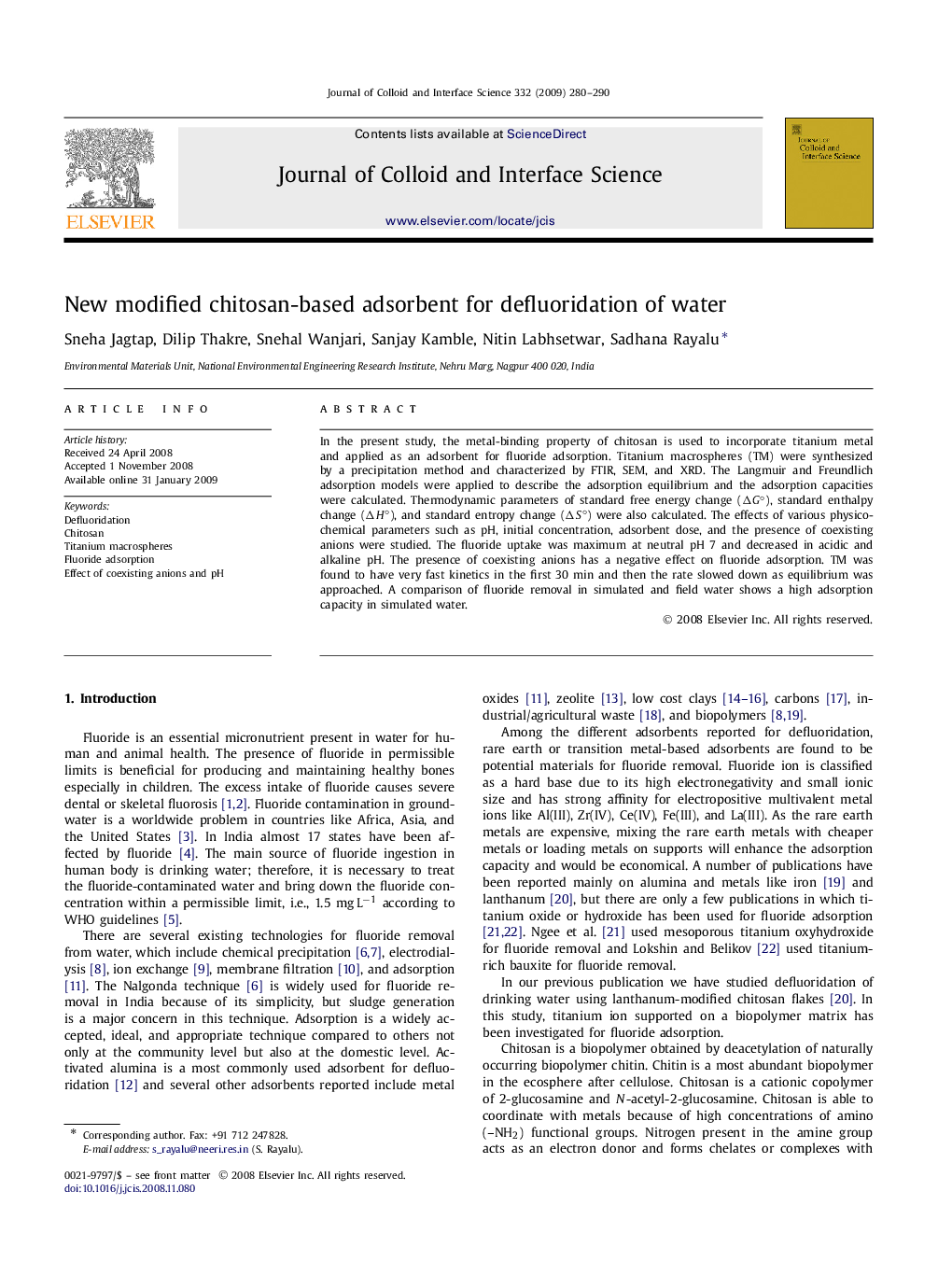| Article ID | Journal | Published Year | Pages | File Type |
|---|---|---|---|---|
| 610616 | Journal of Colloid and Interface Science | 2009 | 11 Pages |
In the present study, the metal-binding property of chitosan is used to incorporate titanium metal and applied as an adsorbent for fluoride adsorption. Titanium macrospheres (TM) were synthesized by a precipitation method and characterized by FTIR, SEM, and XRD. The Langmuir and Freundlich adsorption models were applied to describe the adsorption equilibrium and the adsorption capacities were calculated. Thermodynamic parameters of standard free energy change (ΔG○ΔG○), standard enthalpy change (ΔH○ΔH○), and standard entropy change (ΔS○ΔS○) were also calculated. The effects of various physico-chemical parameters such as pH, initial concentration, adsorbent dose, and the presence of coexisting anions were studied. The fluoride uptake was maximum at neutral pH 7 and decreased in acidic and alkaline pH. The presence of coexisting anions has a negative effect on fluoride adsorption. TM was found to have very fast kinetics in the first 30 min and then the rate slowed down as equilibrium was approached. A comparison of fluoride removal in simulated and field water shows a high adsorption capacity in simulated water.
Graphical abstractChitosan is able to coordinate with metals because of a high concentration of an amino functional group. TM shows a very high fluoride adsorption capacity and affinity for fluoride compared to chitosan.Figure optionsDownload full-size imageDownload as PowerPoint slide
